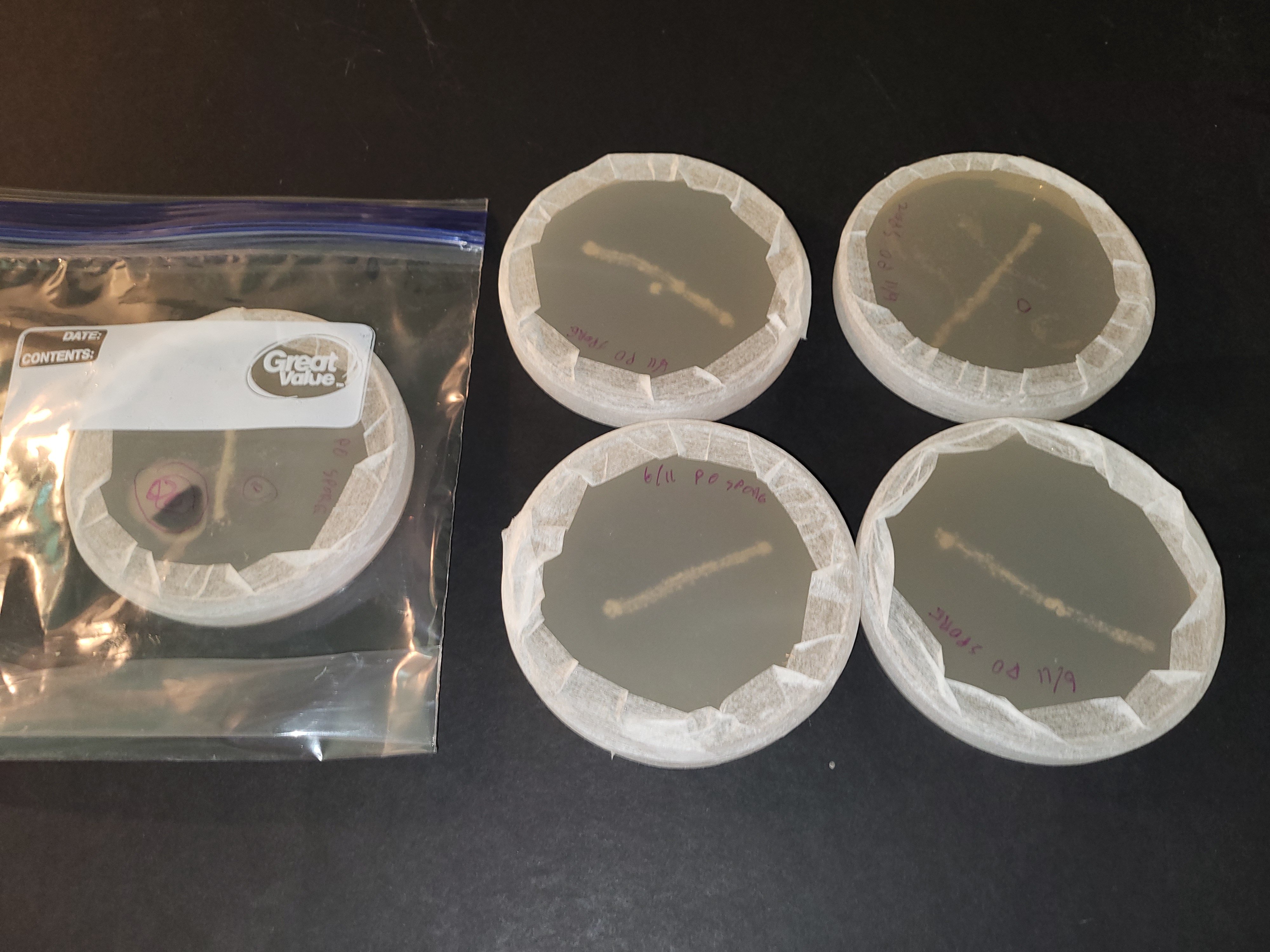Not bad at all! How do you deposit the spores in such a neat line?
I used the tip of a specialized tooth-brush, and I dipped it into water and then swiped-up spores from the sample. I wouldn't recommend it though, because it turns out the brush fibers are too stiff and caught on the agar, pulling the plate around. It's probably better just to stick to swabs and use the same method.
Side thought: a lot of people recommend the z-shape swabbing, but it seems kind-of counterproductive if you're trying to select for the apparent speed and strength of mycelium growth.
Side thought: a lot of people recommend the z-shape swabbing, but it seems kind-of counterproductive if you’re trying to select for the apparent speed and strength of mycelium growth.
Thanks! Interesting to see a line like this :-)
I like preparing a dilutions series and then preparing two or three plates per dilution by adding 1 mL of liquid into the plate. Usually one of the dilutions has a good spore density to get well-separated colonies.
Oh, that's a great idea! I'm clearly new to mycology, so I'm just kind-of experimenting--but you're right, we're talking billions of spores, and only two need to meet in order to form a strain. Hmm...
only two need to meet in order to form a strain
Yeah! And when they do meet, they form a new anatomical structures called 'clamp connections', so if you have a microscope it is easy to check if the mycelium has already mated.
There is a nice series about breeding and how to isolate single-spore haploid mycelium here: https://www.youtube.com/watch?v=vsJpjQhsDIM
The idea is that if you manage to grow plates from single un-mated mycelium, you can then control their breeding, and this is how you can make new strains and have more control over their genetics. It is a more advanced topic in mycology, but a very interesting one to learn about!
Thanks, that is fascinating, I'm definitely gonna check that out. No microscope yet, but it is on my list of things to obtain, although a proper HEPA filter and fan/motor will come first though, haha! Kind-of wondering if I should switch majors, but I'm already in my 400 series engineering classes--oof.
Mycology
